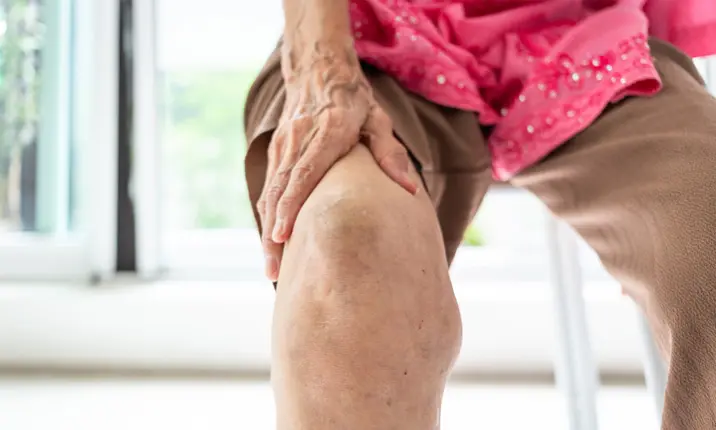

Source: Shutterstock
What is Sports Medicine?
Last updated: Thursday, April 8, 2021 | 4 min reading time
Although traditionally focused on athletes, sports medicine can actually be used to treat anyone.
Sports Medicine is a branch of medicine that uses exercise and sports to treat medical problems and diseases of the body and mind.
Conditions that can be treated and managed in sports medicine include:
- osteoarthritis
- back pain
- joint and muscle problems
- mental and stress issues such as anxiety, hypertension and depression
- metabolic conditions such as diabetes, obesity and high cholesterol.
Types of sports injuries
Different sports injuries produce different symptoms and complications. The most common types of sports injuries include:
- Sprains, often caused by overstretching or tearing of the ligaments that connect two bones to one another in a joint.
- Strains, caused by overstretching or tearing muscles or tendons, which are thick, fibrous cords of tissue that connect bone to muscle.
- Knee injuries, which can range from an overstretch to a tear in the muscles or tissues in the knee, or any other form of trauma that causes pain or difficulty while moving your knee.
- Swollen muscles, usually the result of an injury, that cause pain or weakness.
- Achilles tendon rupture, which results in sudden, severe pain and difficulty in walking. This tendon is the largest and strongest in the body that helps with walking, running and jumping.
- Fractures or broken bones, which can result from falls or strong impact in contact sports.
- Dislocations, which mean that a bone has been forced out of its socket and needs to be set back in place. This is known as reduction.
- Rotator cuff injury may be caused by overuse of the muscles and tendons around the shoulder joint. Injury to the rotator cuff makes some activities more difficult such as reaching behind or above the head.
What is sports medicine?
Contrary to popular belief, sports medicine is not just used to treat athletes; it is for everyone. Besides the obvious benefits of exercise such as increased strength, a healthier heart and better blood circulation, it also helps to protect the brain, improve social functioning and promote better mood and well-being. It is critical in the motor and coordination development in children and essential in preventing the deterioration of health in the elderly.
Our bodies are made to move. Most degenerative diseases have been found to be accelerated without movement and exercise. Movement provides the mechanical stimulus that helps keep a whole host of physiological processes in our body working in their optimal condition.
When is sports medicine necessary?
Patients seek treatment by a sports physician for a variety of reasons, including muscle and joint problems, performance improvement and recovery strategies.
Beyond the musculoskeletal treatment and rehabilitation, treatments may include working through cardiac rehabilitation programmes with a cardiologist, osteoporosis and weight management programmes with an endocrinologist and, for the elderly, fall prevention and frailty programmes with a geriatrician.
Many of these conditions require prescriptive exercise and diet and lifestyle management.
Eating better, strengthening the body and moving better are all keystones in the recovery process of such conditions.
Sports medicine can also be used as a preventive treatment. Healthy people can consult a sports doctor to optimise their fitness levels so that they are better able to stave off injury and disease, and are likely to recover faster and have fewer complications if they get injured.
Finding a balance
Balance is key to leading a healthy life. Too much of anything, even water, can be damaging.
There is always a sweet spot in biological systems where things work the best. Too little leads to deficiencies and too much usually leads to toxicities.
Avoid over-exercising
Overdoing exercise is a recipe for injury. You should exercise at your current level of fitness and progress gradually. If you are not strong enough or your muscles are not balanced enough to do a movement, you are very likely to overload your joints and strain or injure yourself.
But if you progress gradually and train properly, the likelihood of sustaining an injury is much lower.
Practice safe exercises
There is no one exercise that is all good or all bad. It simply depends on your ability to perform it. What will be a safe and appropriate exercise for one person may be detrimental to another.
For example, an athlete who has trained over many months to run a marathon will be able to complete a race with relative ease while someone who has not exercised for years would find it hard to manage 5 kilometres or will push themselves too hard and sustain inevitable injuries.
This is why it is important to stick to an exercise regimen that your doctor, physiotherapist or trainer has recommended and progress slowly and with increased intensity over time.
Prevention of sports injury
There are several things you can do to help prevent injury while exercising or playing sports.
Warm up
Warming up and stretching makes muscles more flexible and able to absorb movements. This makes injury less likely.
Use the right equipment
Sports shoes should fit well and provide the proper support for whatever activity you are engaged in. If you are using equipment at a gym, be sure to ask for advice on how to use them correctly.
Use the correct technique
Proper technique and posture during exercise is very important to prevent muscle and joint injury. A trainer can help to advise you on the proper form you should take while performing different types of exercise.
Avoid doing too much
It's best to practice moderation and gradually increase your level of intensity when you exercise. Doing too much, too soon, increases your risk for injury.
Recovery from sports injury and exercise
Recovery is another area of training that is often misunderstood.
It is not just about resting and sleeping but involves returning the body to its pre-exercise state. This involves recovering not just the muscles and elastic system, but also the hormonal, cardiovascular, immune, metabolic and nervous systems as well as the mental state.
Sports rehabilitation
Rehabilitation from sports injuries involves a structured, customised programme designed by a physiotherapist to improve your strength and mobility. Such a programme may also help to improve balance, coordination and stability, or relieve pain, depending on the type of injury you have sustained.
Recovery from exercise
To recover well from exercise, both active and passive rest is important. Some of the basic recovery modalities include sleep, hydration, nutrition and stretching and doing them properly, but there are many more.
Your sports doctor will also guide you on how to do them effectively individually and in combination.
Restore and maintain body function
Sports medicine is about restoring and maintaining function. It is about the right treatments at the right time, and about specificity, appropriateness and timeliness.
It centres around using exercise and sports as a treatment and preventive measure.
Ultimately, it is about prescribing and titrating the appropriate quantity of diet, exercise, activity, sleep, rest and healthy levels of stress to get you performing and functioning at your optimal state.
Whether you are an athlete or someone with back and joint muscular pain, sports medicine can help make a difference. Make an appointment with our sports doctor today!
(9 November 2018) Everything You Need to Know About Sports Injuries and Rehab. Retrieved 25 March 2021 from https://www.healthline.com/health/sports-injuries
(20 March 2017) Is It a Sprain or a Strain? Tips for Identification. Retrieved 25 March 2021 from https://www.healthline.com/health/sprain-vs-strain
(n.d.) Picture of the Achilles Tendon. Retrieved 25 March 2021 from https://www.webmd.com/fitness-exercise/picture-of-the-achilles-tendon#1
(n.d.) Types Of Fractures. Retrieved 25 March 2021 from https://www.sportsinjuryclinic.net/sport-injuries/fractures
(1 August 2020) Dislocated shoulder. Retrieved 23 March 2021 from https://www.mayoclinic.org/diseases-conditions/dislocated-shoulder/symptoms-causes/syc-20371715
(30 April 2020) Rotator cuff injury. Retrieved 24 March 2021 from https://www.mayoclinic.org/diseases-conditions/rotator-cuff-injury/symptoms-causes/syc-20350225
(n.d.) Sports Injury Rehabilitation. Retrieved 25 March 2021 from https://www.physio.co.uk/treatments/physiotherapy/sports-injury-rehabilitation.php
(20 March 2017) Is It a Sprain or a Strain? Tips for Identification. Retrieved 25 March 2021 from https://www.healthline.com/health/sprain-vs-strain
(n.d.) Picture of the Achilles Tendon. Retrieved 25 March 2021 from https://www.webmd.com/fitness-exercise/picture-of-the-achilles-tendon#1
(n.d.) Types Of Fractures. Retrieved 25 March 2021 from https://www.sportsinjuryclinic.net/sport-injuries/fractures
(1 August 2020) Dislocated shoulder. Retrieved 23 March 2021 from https://www.mayoclinic.org/diseases-conditions/dislocated-shoulder/symptoms-causes/syc-20371715
(30 April 2020) Rotator cuff injury. Retrieved 24 March 2021 from https://www.mayoclinic.org/diseases-conditions/rotator-cuff-injury/symptoms-causes/syc-20350225
(n.d.) Sports Injury Rehabilitation. Retrieved 25 March 2021 from https://www.physio.co.uk/treatments/physiotherapy/sports-injury-rehabilitation.php
 Brain & Spine Care
Brain & Spine Care









